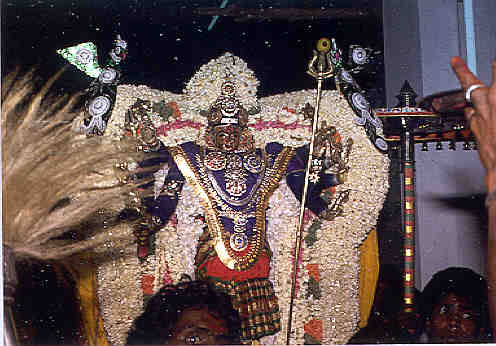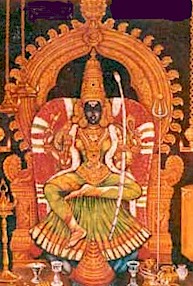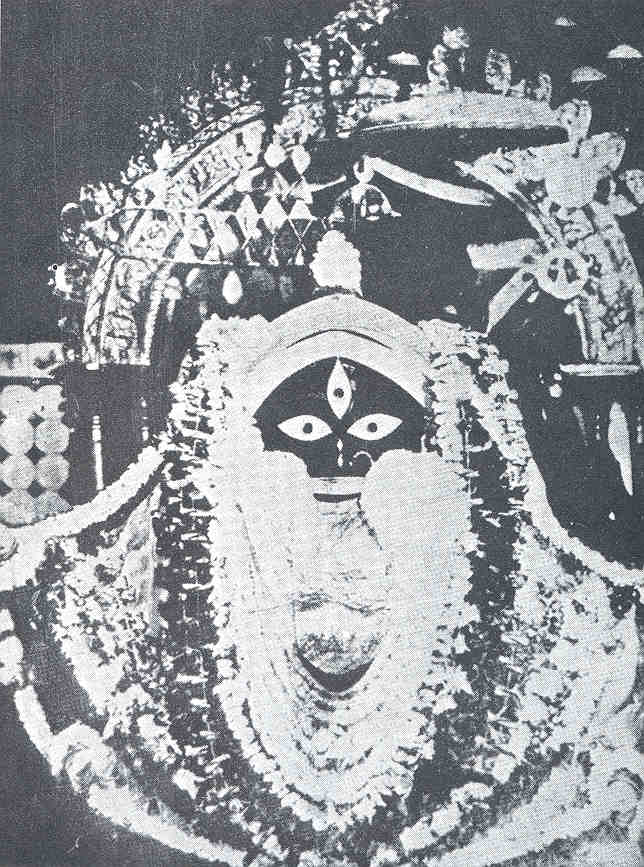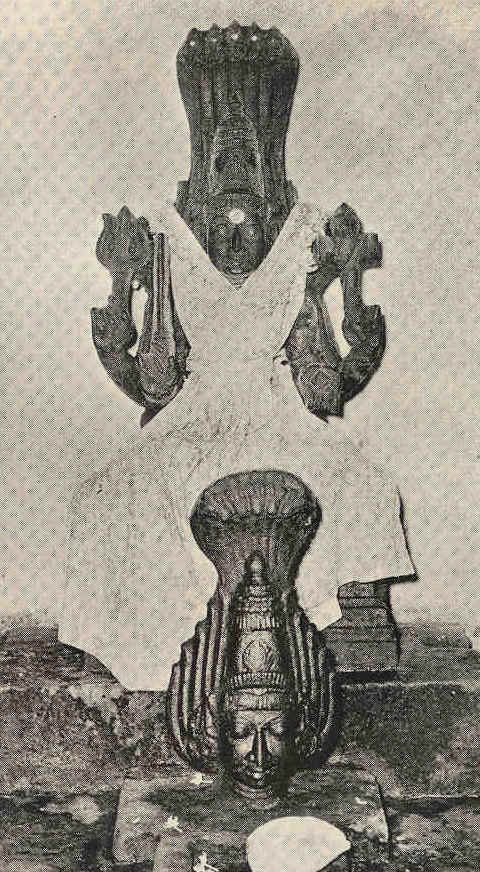| All about Shakti:
The Indian system of beliefs worships the primeval source of energy Shakti - in the form of the mother Goddess Devi.
Variations of this worship are seen throughout the subcontinent. |

|
The Navaratri festival season is associated
with the worship of the mother Goddess conceived in the form of Durga, Lakshmi and
Saraswati. |
| Durga
symbolizes nature in all its might. Durga is central to the legend of the destruction of
the demon Mahishasura. Durga is enshrined in almost all Saivite temples in South India. |
 |
Lakshmi
symbolizes the benevolent aspect of nature. Worshipped as the consort of Vishnu, Lakshmi
is the symbol of prosperity and well being. |
| Saraswati
symbolizes knowledge and wisdom. Saraswati is regarded as the consort of the creator
Bhrahma. All forms of art are said to originate from Saraswati. |

|
Shakti or cosmic energy is
worshipped as the consort of Shiva - Parvati.
Several temples dedicated to Parvati - Shakti are seen all over the land. |
| Kaali
is regarded as the destroyer of evil. The fearful form of Kaali represents inevitablity of
death and decay. |

|
Several non-aagamic shrines
dedicated to the worship of the mother Goddess (village
deities - graama devataas) abound all over the land with regional variations and local
worship traditions. |

